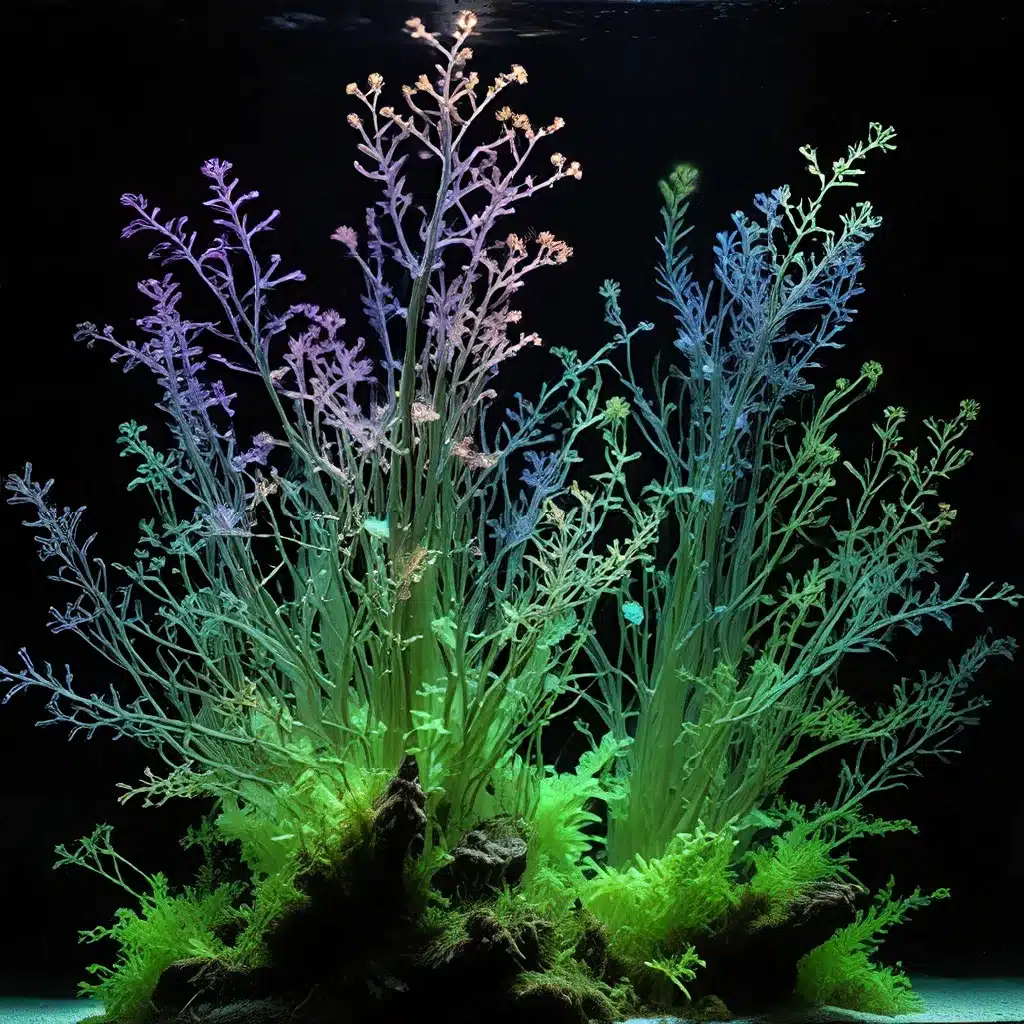
Harnessing the Allure of Aquatic Luminescence
Bioluminescence, the natural production of light by living organisms, has long captivated the imagination of aquarium enthusiasts and marine biologists alike. From the mesmerizing glow of dinoflagellates in bioluminescent bays to the ethereal displays of deep-sea creatures, this phenomenon represents a captivating language of light that is deeply woven into the fabric of aquatic ecosystems.
At the heart of this bioluminescent tapestry lies a diverse cast of bacteria, whose ability to produce light has opened up a world of intriguing possibilities for aquarium hobbyists. By understanding the unique properties and applications of these luminous bacteria, aquarists can not only create visually stunning displays but also gain valuable insights into the health and balance of their aquatic environments.
Unveiling the Secrets of Bioluminescent Bacteria
Bioluminescent bacteria, such as the renowned Vibrio fischeri, are capable of emitting a soft, glowing light through a chemical reaction involving the enzyme luciferase and the substrate luciferin. This light-emitting process is a remarkable adaptation that has evolved in various marine organisms, serving a range of critical functions, from predator avoidance and prey attraction to intraspecies communication.
In the context of aquariums, these bioluminescent bacteria can be harnessed to create mesmerizing displays that captivate both hobbyists and visitors alike. By cultivating and maintaining the right conditions for these luminous bacteria to thrive, aquarists can introduce a captivating element of natural bioluminescence into their aquatic environments.
Harnessing the Power of Bioluminescent Bacteria
One of the primary applications of bioluminescent bacteria in aquariums is their use as natural water quality indicators. Vibrio fischeri and other similar species are highly sensitive to a wide range of environmental pollutants, including heavy metals, pesticides, and industrial chemicals. By monitoring the light output of these bacteria, aquarists can gain a real-time understanding of the water’s overall health and quickly identify any potential problems.
The Microtox system, a specialized device that measures the luminescence of bioluminescent bacteria, has become a valuable tool in the aquarium hobbyist’s arsenal. By simply introducing a sample of water into the Microtox system, aquarists can receive a quantitative assessment of the water’s toxicity levels, allowing them to make informed decisions about necessary maintenance and filtration adjustments.
Crafting Visually Stunning Aquascapes
Beyond their practical applications, bioluminescent bacteria can also be leveraged to create breathtaking visual displays within aquariums. By carefully cultivating and introducing these luminous microorganisms into specific areas of the aquascape, aquarists can transform their underwater environments into captivating, otherworldly landscapes.
One innovative technique, known as bioluminescent aquascaping, involves strategically placing bioluminescent bacteria in various regions of the aquarium, such as near decorative rocks, driftwood, or even within the substrate. As the bacteria begin to glow, they create a mesmerizing, ethereal effect that can mimic the natural bioluminescent displays observed in marine environments.
Balancing Aquarium Ecosystems with Bioluminescent Bacteria
The integration of bioluminescent bacteria into aquarium ecosystems goes beyond just visual appeal. These luminous microorganisms can also play a crucial role in maintaining the overall health and balance of the aquatic environment.
Vibrio fischeri, for example, is known to form symbiotic relationships with various marine organisms, including the iconic Hawaiian bobtail squid. By colonizing the squid’s light-producing organs, these bacteria provide the squid with the ability to emit a soft, glowing light that helps it camouflage itself and avoid predators.
In the aquarium setting, the introduction of Vibrio fischeri and other bioluminescent bacteria can create a similar symbiotic relationship, potentially benefiting the overall health and well-being of the aquatic inhabitants. By maintaining a thriving population of these luminous bacteria, aquarists can foster a more balanced and resilient ecosystem, where the natural interplay of light and life reflects the intricate beauty of the underwater world.
Exploring the Frontiers of Bioluminescent Aquarium Technology
As our understanding of bioluminescent bacteria continues to deepen, the possibilities for their integration into aquarium systems have become increasingly sophisticated. Researchers and aquarists alike are exploring innovative applications that push the boundaries of what is possible in the realm of aquatic lighting and environmental monitoring.
One such advancement is the bioluminescent alarm system, where the light output of bioluminescent bacteria is used to detect and alert aquarists to changes in water quality or the presence of pollutants. By linking the bacteria’s light response to a monitoring system, aquarists can receive real-time notifications of potential issues, allowing for swift intervention and the prevention of potential disasters.
Furthermore, the unique properties of bioluminescent bacteria have also piqued the interest of the medical and scientific community. The use of bioluminescent biosensors, for instance, has shown promise in the early detection of various diseases and environmental contaminants, with potential applications in both human and aquatic health monitoring.
As the aquarium hobby continues to evolve, the integration of bioluminescent bacteria into aquarium systems is poised to become an increasingly prevalent and valuable tool for hobbyists, researchers, and conservationists alike. By harnessing the captivating power of natural light and the inherent sensitivity of these luminous microorganisms, the aquarium community can unlock new frontiers in aquatic ecosystem management and create mesmerizing underwater landscapes that inspire wonder and awe.
Conclusion: Embracing the Bioluminescent Future of Aquariums
As we delve deeper into the mysteries of bioluminescent bacteria and their vast potential in the aquarium world, we find ourselves on the cusp of a new era of aquatic exploration and innovation. From enhancing the visual appeal of our aquascapes to safeguarding the health of our aquatic ecosystems, these luminous microorganisms hold the key to unlocking a future where the aquarium hobby becomes a canvas for the wonders of the natural world.
By embracing the power of bioluminescence, aquarists can not only create mesmerizing displays that captivate the senses but also gain invaluable insights into the intricate balance of aquatic life. As we continue to push the boundaries of what is possible in the realm of aquarium technology, the integration of bioluminescent bacteria will undoubtedly play a pivotal role in shaping the future of this vibrant and ever-evolving hobby.

